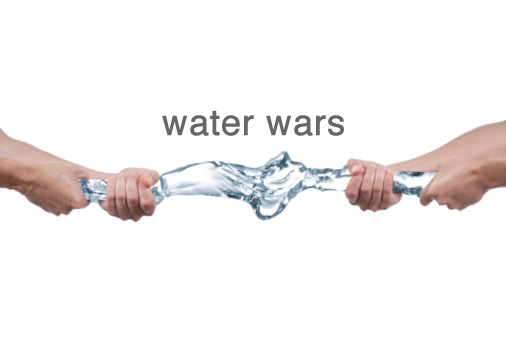Recently I've been talking quite about the use of greenhouses as water saving technology. The next couple of posts will be a little different, more of a birds-eye-view which will highlight some of the ideas behind large scale water management in Africa and other places.
While water saving adaptation and technology can change the playing field and enable more to be achieved with the same resources, country or river basin management ideology can often dictate ground conditions and make certain small adaptations feasible or unfeasible. Government policy aims and management policies are just as, or more important than small technologies.
We start off with some competitive scenarios of water resource utilisation. Water resources are over-extracted and over-used in many parts of the world where agriculture is important, but rainfall is inadequate. Dam and irrigation projects, as well as groundwater abstraction projects can help meet some of the water shortfall, but there also exists competition over these resources.
In African irrigation projects, large dams and leaky channels which cause water loss to the ground and atmosphere have increased focus on water efficiency (producing more crop per water). However, this has diluted attention from an equally problematic issue; of how water is distributed in time and space. It is hardly equitable for downstream users of river water when upstream users consume most of the available resources, no matter how efficient they are. Competition for water between farmers of irrigation projects also occur during times of water stress.
Many blue-water stressed areas have turned to groundwater abstraction to support intensive agriculture where the geology is favourable. In Africa, this includes parts of countries like Senegal and Zambia. However, in face of high demand, groundwater can also turn into an unsustainable and polluted source. In southern India, this undesirable scenario has played out; but insights offered by a more comprehensive view of water management have shed light on potential solutions.
In south India, farmers have been encouraged to intensively grow rice since the Green Revolution. This has stressed water supplies, but instead of reducing or moderating use, researchers found farmers competitively acquiring water for private use (using private groundwater sources) as a response to water stress.
Suggested solutions to solve overuse of groundwater in southern India include improving farmers' usage efficiency, promoting crops with lower water requirements, and institutionalising a price mechanism for groundwater. While the desire to provide water for rice cultivation is socially and politically motivated (i.e. avoid encroaching upon the rights of farmers), a wider scale, integrated water management approach highlights the impossibility of getting something out of nothing.
Attempts to resolve groundwater shortages by using supply from rivers would decrease amounts available for downstream users, and does not do anything to stop demand from increasing in the future. As in the case of irrigation competition in Africa, efficient use of local water in one place doesn't exactly justify cutting water off for other places. Usage of ground or river water for large scale farming may cause economic losses for more vulnerable groups and farmers.
Consideration of external factors, (other than just local situation) has enabled academics to advise policy makers to take alternative action, instead of blindly increasing water supply. I'll write more about what I think integrated water management is about in another post, so till then.
Stay starchy people.
Mr. Cassava



